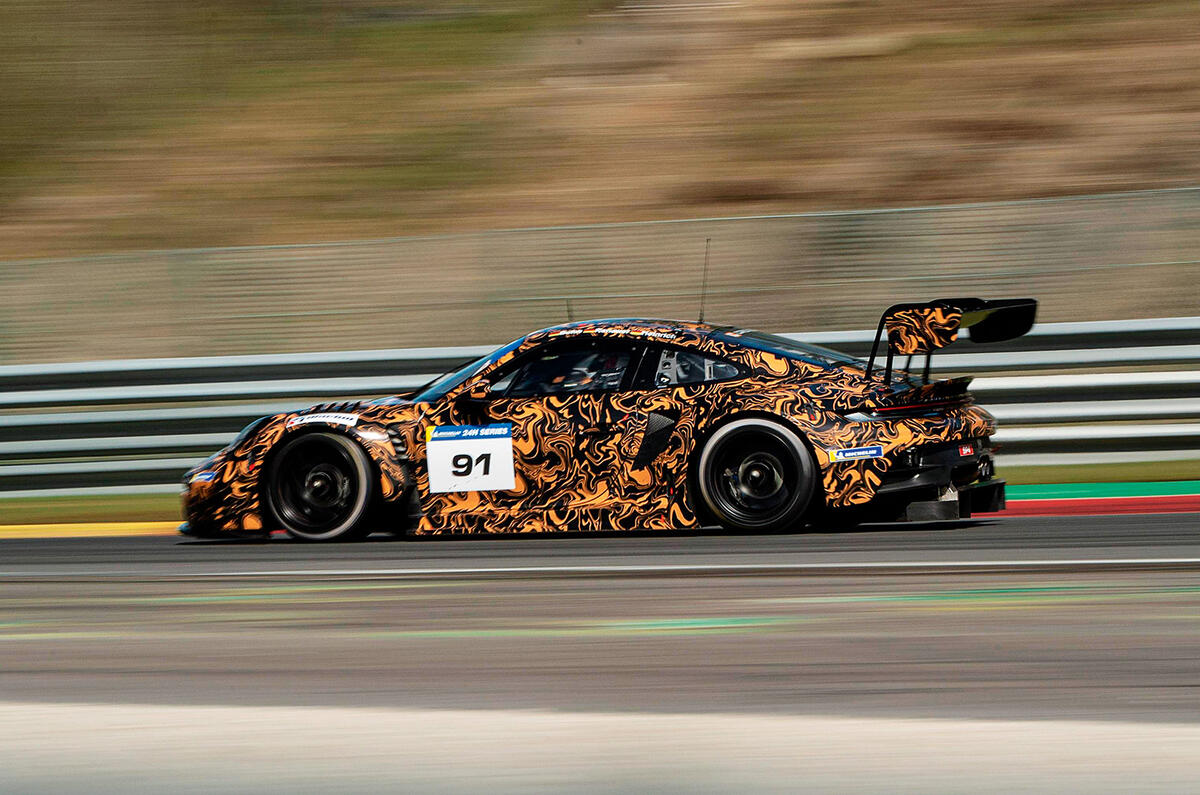With so much of the news from manufacturers these days focused on software-defined vehicles, we could be forgiven for believing the era of grassroots engineering has long passed.
Thankfully it hasn't, and the same basic principles still apply to making cars go, stop, steer and hold the road, even if the backroom tools used to do that are more sophisticated.
The Porsche GT3 is still as much about old-school tuning and development as it is image. The latest 992 GT3 R was launched in 2023, and its suspension and aero have been further tweaked by Porsche Motorsport for 2026.
Using feedback from customer teams worldwide, the objective was to take handling and drivability up a notch, especially for amateur racers. As is typical at this level of performance, small changes can make a big difference.
At the front, the focus was on reducing dive during deceleration at high speeds, with a combination of aero and mechanical mods.
Louvres in the top of the wheel arches, combined with the design of the double-wishbone front suspension, counteract front-end compression during deceleration to control 'pitch sensitivity' the tendency of the car's nose to dip under braking. It makes the GT3 R more predictable under braking and easier to control.
Changes at the front of a racing car inevitably call for adjustments at the rear to keep things in balance.
The rear wing has a 4mm Gurney flap, a small, insignificant-looking tab that runs the width of the trailing edge of a wing, increasing downforce and further reducing pressure under the aerofoil section of the wing.
The device is widely used in racing and owes its name to American racing driver Dan Gurney, who developed the idea in the 1970s to great effect.
As well as generating more downforce, it gives more scope for adjusting the GT3's aerodynamic balance, says Porsche. The underbody is fully enclosed, too, and has been strengthened at the rear.
Along with the aerodynamic changes, the geometry of the rear suspension has been modified to increase the anti-squat effect under hard acceleration. Doing so evens out the load distribution between the axles and, with all the other changes, results in more balanced handling.
Improvements have been made to the electrohydraulic power steering: liquid cooling maintains an even temperature and more even steering force and feel.
Other details include new ceramic wheel bearings, improved driveshaft cooling and more easily adjusted rear brake cooling. Owners of existing GT3 Rs can buy an upgrade kit so they're not left behind, and several other options packages are available to make the already highly competitive car even more so.









Join the debate
Add your comment
It's a rather counterintuitive idea that a front axle with a more anti-dive geometry could improve driver feel under hard braking, but I have too much respect for Porsche to believe what's been said isn't true. I look forward to rading from road testers.
Sorry. I look forward to reading from road testers.